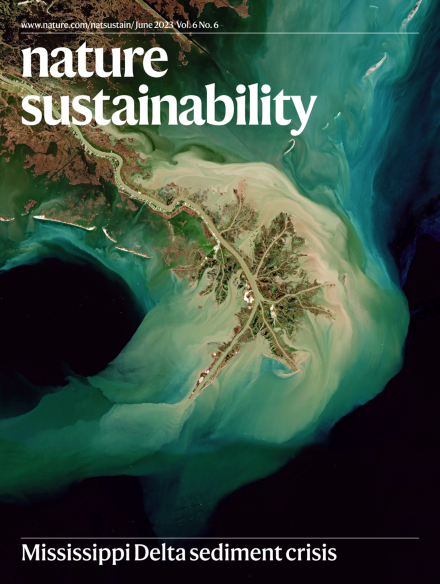从盐湖卤水中可持续地提取锂并联合生产氢氧化镁
IF 25.7
1区 环境科学与生态学
Q1 ENVIRONMENTAL SCIENCES
引用次数: 0
摘要
近年来,随着锂离子电池在推动全球向低碳社会转型中发挥越来越重要的作用,对锂(Li)的需求一直在上升。与主要从硬岩中提取锂相比,从盐水中提取锂已被证明更具经济性和可持续性。然而,仍然存在重大挑战,包括提取过程效率低,特别是对于高盐度,复杂成分和对镁(主要竞争物种)选择性差的盐水。在这里,我们展示了一个涉及乙二胺四乙酸(EDTA)的松散纳滤过程,用于直接和有效地从盐湖盐水中提取Li+以及有效地利用Mg2+。利用EDTA4−与Mg2+的选择性结合,该工艺实现了99.85%的Mg2+截留率、~4.34 mol m−2 h−1的超快Li+通量和前所未有的工业条件下Li+/Mg2+分离因子(~679)(127.06 g l−1)。更重要的是,通过两级过滤工艺,Li+回收率达到89.90%,Mg2+废物转化为纳米结构的Mg(OH)2, 98.87%的EDTA4−可再生。我们的可扩展流程最大限度地减少对环境的影响,同时最大限度地利用资源,从而促进向更可持续的未来转变。全球实现净零经济的竞赛在很大程度上依赖于锂来为电动汽车提供动力和储存可再生能源。本文介绍了一种从盐湖盐水中选择性提取锂的工艺,以及镁的利用。本文章由计算机程序翻译,如有差异,请以英文原文为准。

Sustainable lithium extraction and magnesium hydroxide co-production from salt-lake brines
In recent years, the demand for lithium (Li) has been on the rise as Li-ion batteries are playing an increasingly important role in powering the global transition to a low-carbon society. In contrast to the predominant production of lithium from hard rock, lithium extraction from brine sources has proven more economical and sustainable. However, substantial challenges remain, including the low efficiency of the extraction process, especially for brines of high salinity, complex composition and poor selectivity against magnesium, the major competing species. Here we show a loose nanofiltration process involving ethylenediaminetetraacetic acid (EDTA) for direct and efficient Li+ extraction as well as effective Mg2+ utilization from salt-lake brines. Taking advantage of selective binding between EDTA4− and Mg2+, our process achieves ultrahigh Mg2+ rejection of 99.85%, ultrafast Li+ flux of ~4.34 mol m−2 h−1 and unprecedented Li+/Mg2+ separation factor (~679) under industrial conditions (127.06 g l−1). More importantly, the Li+ recovery rate reaches 89.90% through a two-stage filtration process, while Mg2+ waste is converted to nanostructured Mg(OH)2 and 98.87% of EDTA4− can be regenerated. Our scalable process minimizes environmental impact while maximizing resource utilization, thereby catalysing the shift toward a more sustainable future. The global race to a net-zero economy depends heavily on lithium—to power electric vehicles and to store renewable energy. Here the authors show a selective lithium extraction process from salt-lake brines, together with magnesium utilization.
求助全文
通过发布文献求助,成功后即可免费获取论文全文。
去求助
来源期刊

Nature Sustainability
Energy-Renewable Energy, Sustainability and the Environment
CiteScore
41.90
自引率
1.10%
发文量
159
期刊介绍:
Nature Sustainability aims to facilitate cross-disciplinary dialogues and bring together research fields that contribute to understanding how we organize our lives in a finite world and the impacts of our actions.
Nature Sustainability will not only publish fundamental research but also significant investigations into policies and solutions for ensuring human well-being now and in the future.Its ultimate goal is to address the greatest challenges of our time.
 求助内容:
求助内容: 应助结果提醒方式:
应助结果提醒方式:


